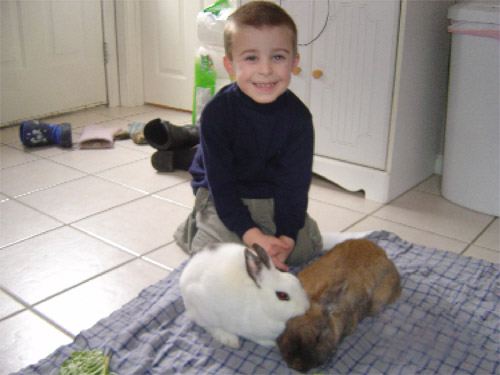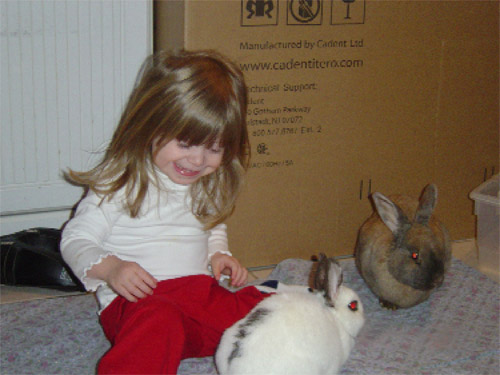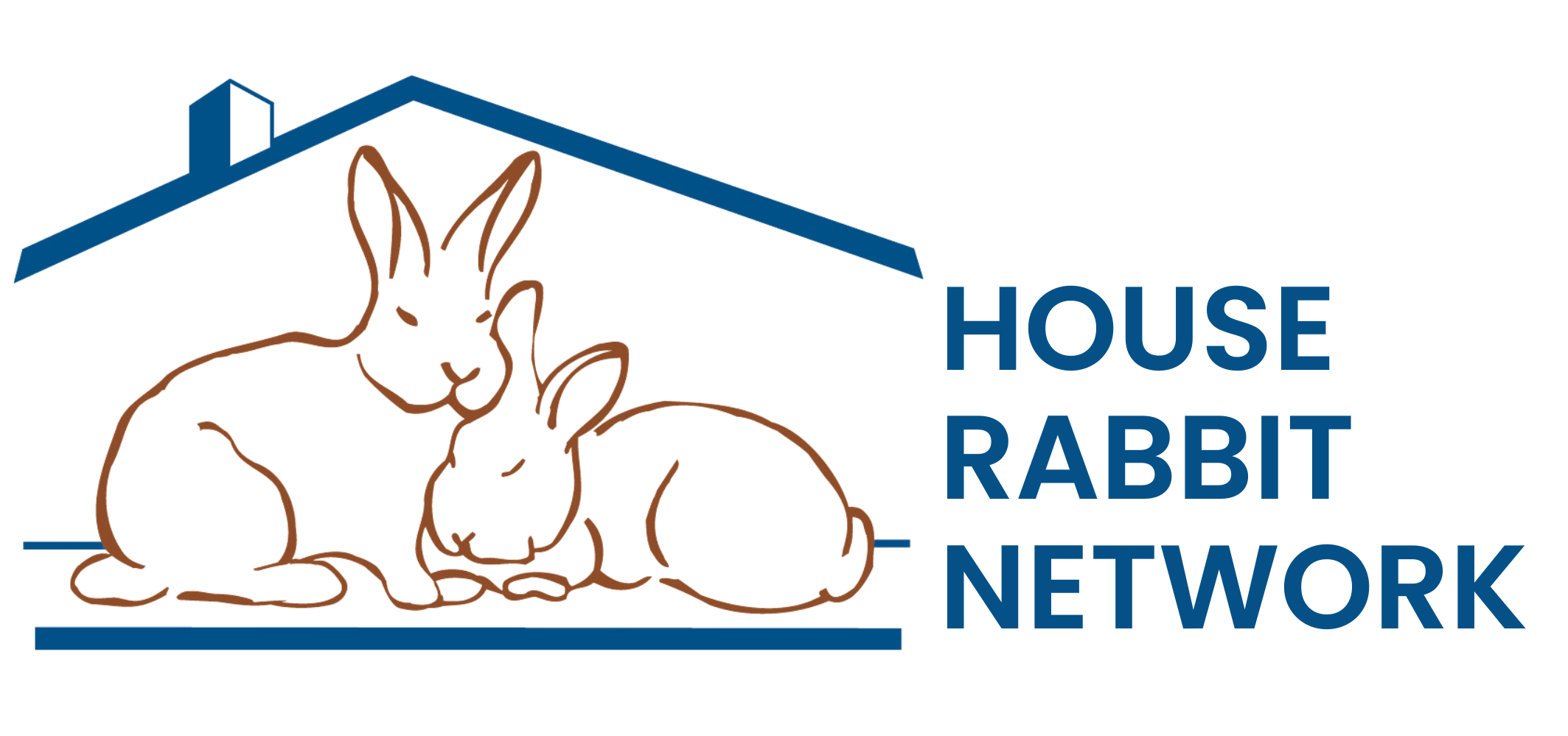Rabbits and Children – Do They Mix?

Images abound of children playing with rabbits. You can easily find pictures of a child snuggling with a bunny or playing with one. Often rabbits are considered a good “starter pet” for a child. Many of these preconceived notions are inaccurate. While rabbits can make great family members and often do well in families with children, it is important to understand how they’ll interact with a child and to set proper expectations.
With any pet it’s helpful to understand common behaviors, and with rabbits there are many misconceptions. If you know what their typical behaviors are, you’ll be able to evaluate whether they’re the right pet for your family. For example, while rabbits are playful, they do not play interactively the way a dog or cat does. If you want interactive play (such as tossing a ball), then you should choose a different pet. Many families do enjoy watching their rabbits play. Rabbits can be quite playful and entertaining, and seeing them race around a room, do binkies and get excited for treats can bring a lot of joy.
Another common problem is that young children tend to look at rabbits almost as living dolls they can carry around. Since most rabbits don’t like being held, and holding a rabbit can be dangerous, you need to make sure your child is not expecting to carry a rabbit around. Some rabbits struggle and scratch if you try to hold them, and then children tend to drop them. Unfortunately, rabbits don’t land on their feet well and can easily break their spines or a leg. You don’t want your child to experience this. Children should be taught that they shouldn’t pick up a rabbit.
Young children should always be supervised around rabbits and taught when to leave them alone. Bunnies need both quiet time and playtime. There are many people who let their bunnies out of their cages and instantly want their rabbits to snuggle with them. Meanwhile, when rabbits that have been cooped up in their cages get out, the first things they want to do are run and play. Teach children to let the buns have some playtime when they first get out of their cage. After they’ve stretched their legs a bit, they’ll likely be more interested in attention from you and your child.
Make sure you set proper expectations before a pet arrives at your home. This is often a matter of compromise. Saying you shouldn’t hold rabbits doesn’t mean they don’t like attention. Some rabbits will sit next to you on the couch while you watch TV and happily be pet. You can lie on the floor next to your bun and snuggle with them that way. Another compromise is to have your child sit on the floor and place the rabbit in their lap, but when the rabbit hops away, that has to be okay. Kids often enjoy giving treats to the rabbit, which is another way for them to interact with and give attention to the bun. We also encourage children to sit near the rabbit’s cage and read a book out loud. The rabbits enjoy listening and it helps them bond.
Many children beg their parents for a pet. In turn, many parents decide that when their child reaches a certain age, they are “responsible enough” to have a pet of their own. They often think that rabbits are good starter pets, but they really aren’t. First off, rabbits live 7–10 years. A child’s attention span is shorter than that. Would you ever sign your kid up for 8 years of soccer, karate or piano lessons? You are signing your child up for 7–10 years of owning and caring for a rabbit! This is way too long a commitment to make for your child. Then, when the child becomes a teenager, has a social life or just loses interest, some parents get rid of the rabbit to “teach their child a lesson.” How is that a lesson? The teenager is usually fine with getting rid of a pet they don’t want to take care of anymore. What they’re being taught is that pets are disposable, and if something is a burden, it’s okay to just make it go away.

Many parents will also tell us that they understand that they need to be the primary caregivers. It’s essential to know that this involves more than just feeding and cleaning cages. It also means providing love and attention. Rabbits are actually a fair amount of work. Still, they can be a wonderful addition to a household as a “family pet.” If the parents are animal people and will love and care for the rabbit too, then this is often a successful placement.
If you decide that a rabbit will make a great addition to your family, the next step is to choose the right rabbit. Rabbits have many different personality types, ranging from shy and timid to outgoing, curious, mellow, aggressive and more. When dealing with young children, it’s important to choose a rabbit that has never shown any aggressive behaviors. We can teach adults how to interact with temperamental buns, but you can’t expect that from a five-year-old. Next, you also want an outgoing rabbit that is quite self-assured. There are rabbits that would never hurt your child but are on the timid side. Even well-behaved children can be noisy, so you want a bun that isn’t going to be startled or frightened by this behavior. If you work with a professional organization, they can describe the different personalities and help you choose the right rabbit for your family.
When considering a rabbit as a family pet, it’s important to know their expected life span and the care they require so that you can understand the commitment you’re making. Knowing rabbits’ typical behaviors will help you set expectations for your children – remind them that they must always be supervised with the bun and they should never pick up a rabbit. It’s also important to choose the right rabbit for your family, one that is self-assured and hasn’t shown any biting behaviors. Under these conditions, rabbits can definitely make a loving, fun addition to a family.
by Suzanne Trayhan
